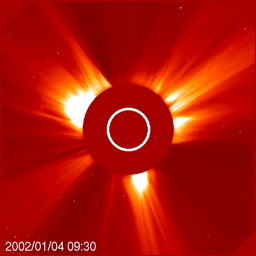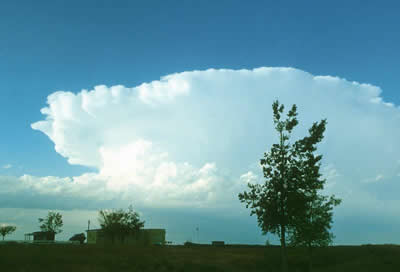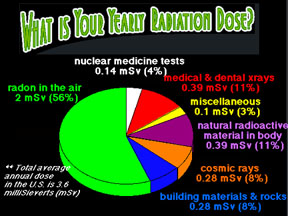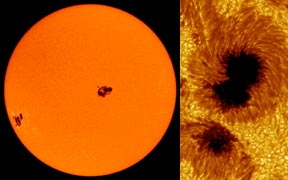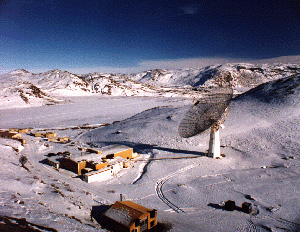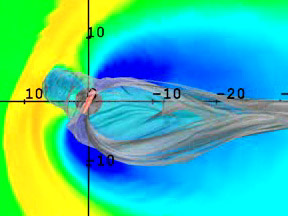Click on image for full size
Images courtesy SOHO (NASA & ESA). Animation by Windows to the Universe staff (Randy Russell).
Related links:
A CME blasts Comet NEAT as it passes the Sun
Video: Journey Beneath a Sunspot
Video: Dark Days Ahead for the Sun
Activity: Plotting Locations of Active Regions on the Sun
Activity: Tracking the Motion of an Active Sunspot Region
When Nature Strikes: Space Weather
When Nature Strikes: You Be the Solar Scientist! Classroom Activity
Solar Storms
You know that there are all kinds of storms here on Earth - thunderstorms, blizzards, tornadoes, and hurricanes. The Sunalso has storms.
There are two different kinds of storms on the Sun. They are called solar flares and CMEs (short for Coronal Mass Ejections). Solar flares last only a few minutes to as long as an hour. CMEs usually last a few hours. Even in this short amount of time, both storms on the Sun can give off more energy than 100 hurricanes on Earth!
The energy from solar storms can be dangerous if it reaches Earth! Astronauts on spacewalks are in danger of radiation exposure, and electronics on satellites can be fried. We're safe here on Earth because of the shield the Earth's magnetic fieldand atmosphere provide.
Sometimes, solar storms do offer us a wonderful (safe!) treat. The beautiful aurora (Northern and Southern Lights) are results of solar storms.
Some "seasons" are stormier than others on the Sun. More storms happen in the height of the 11-year solar cycle or near solar maximum times.


